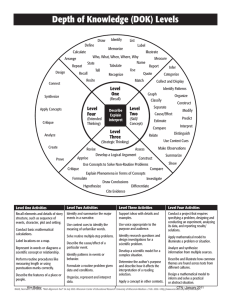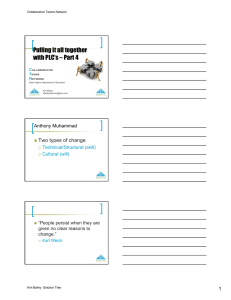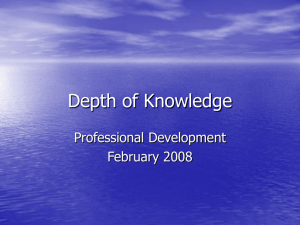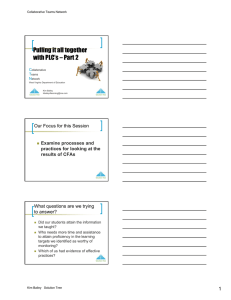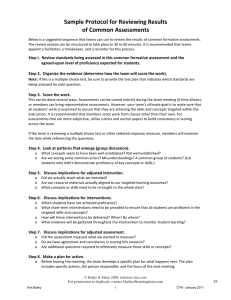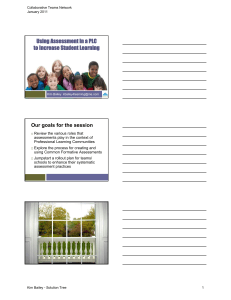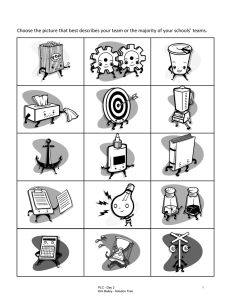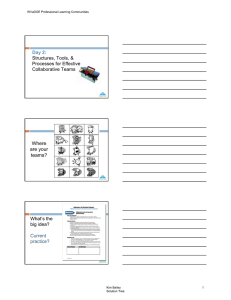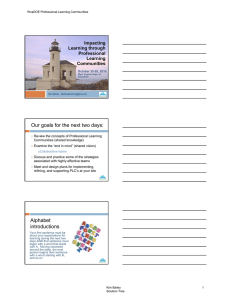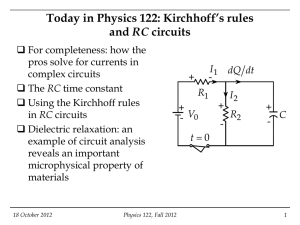Using Assessment in a PLC to Increase Student Learning BIG IDEAS
advertisement
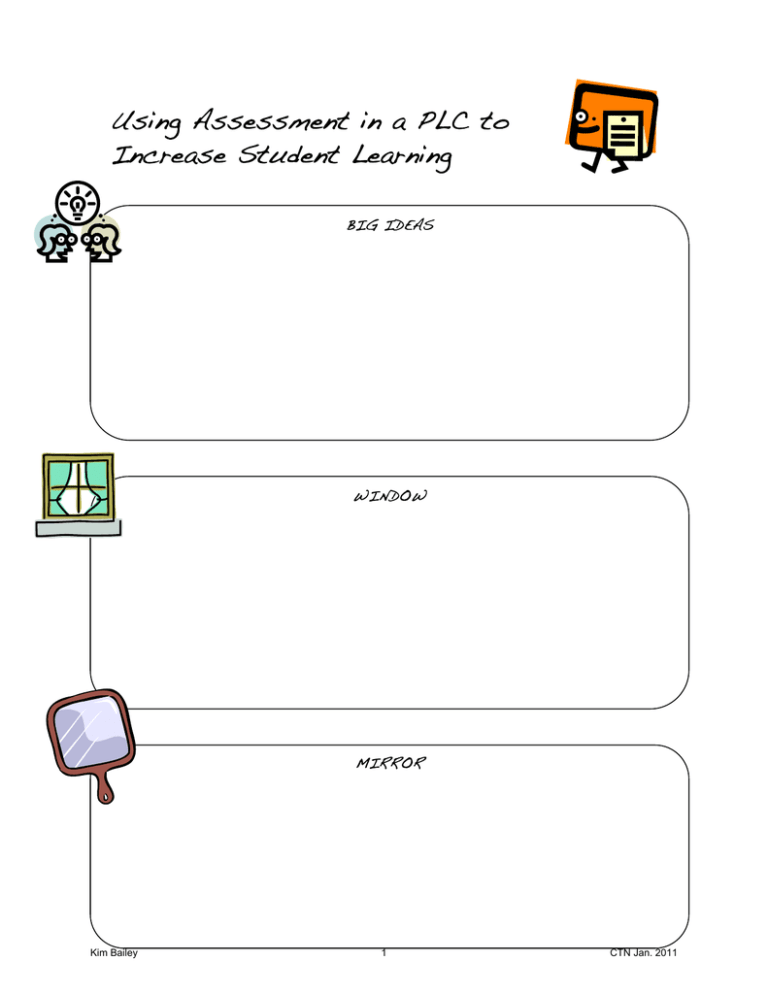
Using Assessment in a PLC to Increase Student Learning BIG IDEAS WINDOW MIRROR Kim Bailey 1 CTN Jan. 2011 Step 1: Identify Power Standards Adjust Instruction based on collaborative, ongoing data-analysis, including examination of student work. Step 4: Participate in ongoing datadriven decision making How do we respond when they aren't learning, or if they already know it? Design lessons to support attainment of power standards. Consider student engagement, researchbased practices, studentinvolved assessment. Kim Bailey “Unwrap” Standards, Identify Big Ideas & Essential Questions What do we really want students to know and be able to do? A Process for Alignment of Curriculum, Instruction, and Assessment Step 3: Design & Deliver Effective Instruction Step 2: Design/Use Assessments for Learning How will we know students are learning (before it’s too late)? Develop performance assessments, rubrics, and common formative assessments What are research-based practices that will lead to student learning of power standards and beyond? 2 CTN Jan. 2011 Implementation of Effective Assessment Practices Level 1: Teachers’ Instructional Adjustments Teachers gather evidence to adjust their teaching strategies Level 2: Students’ Learning Tactic Adjustments Students use results to adjust their learning strategies Level 3: Classroom Climate Shift Classroom shifts from comparison dominated to learning dominated Level 4: Schoolwide Implementation Systematic implementation through professional development James Popham, Transformative Assessment, p. 49 Kim Bailey 3 CTN Jan. 2011 Depth of Knowledge (DOK) Levels Define Identify Draw Memorize List Label Illustrate Who, What, When, Where, Why Measure Arrange Name State Tabulate Repeat Report Infer Use Tell Design Recall Quote Categorize Recognize Recite Match Collect and Display Connect Identify Patterns Level Graph One Organize Synthesize (Recall) Classify Construct Separate Level Level Apply Concepts Describe Modify Cause/Effect Two Four Explain Predict (Skill/ (Extended Interpret Estimate Critique Concept) Thinking) Interpret Compare Level Distinguish Analyze Relate Calculate Three Use Context Cues (Strategic Thinking) Create Prove Revise Apprise Assess Develop a Logical Argument Construct Make Observations Use Concepts to Solve Non-Routine Problems Summarize Show Compare Explain Phenomena in Terms of Concepts Formulate Investigate Draw Conclusions Hypothesize Differentiate Cite Evidence Critique Level One Activities Level Two Activities Level Three Activities Level Four Activities Recall elements and details of story structure, such as sequence of events, character, plot and setting. Identify and summarize the major events in a narrative. Support ideas with details and examples. Use context cues to identify the meaning of unfamiliar words. Use voice appropriate to the purpose and audience. Conduct a project that requires specifying a problem, designing and conducting an experiment, analyzing its data, and reporting results/ solutions. Solve routine multiple-step problems. Identify research questions and design investigations for a scientific problem. Conduct basic mathematical calculations. Label locations on a map. Represent in words or diagrams a scientific concept or relationship. Perform routine procedures like measuring length or using punctuation marks correctly. Describe the features of a place or people. Kim Bailey Describe the cause/effect of a particular event. Develop a scientific model for a complex situation. Identify patterns in events or behavior. Determine the author’s purpose and describe how it affects the interpretation of a reading selection. Formulate a routine problem given data and conditions. Organize, represent and interpret data. Apply a concept in other contexts. 4 Apply mathematical model to illuminate a problem or situation. Analyze and synthesize information from multiple sources. Describe and illustrate how common themes are found across texts from different cultures. Design a mathematical model to inform and solve a practical or abstract situation. CTN Jan. 2011 Webb, Norman L. and others. “Web Alignment Tool” 24 July 2005. Wisconsin Center of Educational Research. University of Wisconsin-Madison. 2 Feb. 2006. <http://www.wcer.wisc.edu/WAT/index.aspx>.
